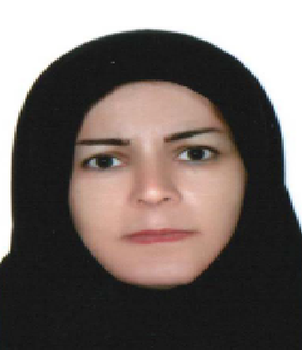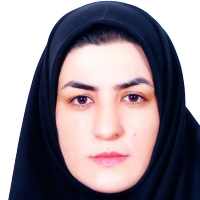Analytical-structural application of sustainable urban regeneration, Case study: Khorramabad city
After about three decades of focusing on unidirectional economic growth, the emergence of the unpleasant consequences of this method of development in the natural arenas and the threat of many non-renewable resources since the 1970s onwards, environmental considerations are a decisive factor in the urbanization debate Became the This section should be considered as the beginning of serious attention to environmental affairs, so that by designing the concept of sustainability and the term sustainable development in the 1980s and publishing the Brundtland Report in 1987, the environment was presented as an integrated and integrated look at urban regeneration Brundtland Income, 1987)) The translation of this attention in the context of the city includes the following and many considerations related to these matters, So, we can say that economic, social and environmental analyzes are taking place in the process of urban regeneration. In this process, the data includes the internal stimuli of change, such as existing strategies, availability of resources, resident preferences, participation status, leaders and guides, and specific regional urban features including urban scale analyzes, neighborhood features Existing policies and programs, goals and goals, and future needs and requirements. Foreign stimuli of change, such as: macroeconomic flows in the economy, national and transnational policies, are rival cities' strategies. The output of the process is in various dimensions, including physical dimensions, neighborhood policies, economic development, environmental measures and neighborhood policy. Khorram Abad, with a legal area of 3475 hectares, has 28 neighborhoods and an inefficient (eroded) point with an area of nearly 260 hectares, with a ratio of inefficient tissue to the total area of the city near 7 percent. It is worth noting that part of the inefficient texture of the city of Khorramabad forms about 150 hectares of the historical city texture, which is located in the geometric center of gravity of the physical structure and spatial organization of the city and has a role and function of economic and cultural resources and positions Different from the newly developed regions and consequently in relation to the overall character of the city. The powerful and influential presence of the Falklat Castle in the historical context has given the distinctive cultural influence to the textures. The fitting of the Old Town's market has had a dramatic effect on the city's potential and economic functions in its historical context. In general, this texture is still the center of service, administration, and culture of the city (Omidvar & Biranondzadeh, 2011, p. 95). According to the mentioned cases, the present study aims to investigate the causal relationships between the components affecting sustainable urban regeneration in Khorramabad city inefficient tissue.
The research type is descriptive-survey, the study area is inefficient tissue of Khorramabad city. The statistical population consisted of 30 experts and 382 inhabitants of the tissue. The data gathering tool was a researcher-made questionnaire, which has been reviewed by the researchers. Cronbach's alpha test was used to measure the reliability of the questionnaire, and the Cronbach's alpha coefficient for all the studied indices was 0.794, which is acceptable in terms of reliability. For data analysis, quantitative models such as Swat Demattel multi-criteria decision making models have been used. Structural equation model was used to measure the effective factors on inefficient tissue regeneration in Khorramabad city. . Friedman test was used to prioritize and rank the effective variables on inefficient tissue regeneration in Khorramabad city. The main assumption of this research is that sustainable urban regeneration is affected by social, economic, physical, managerial and environmental factors.
Structural modalities were used to measure the effective factors on inefficient tissue regeneration in Khorramabad city. Before normal fitting of the model, it is necessary to study the normality of the data for analysis. Therefore, for calculating the normality of the data, the values of skidding and elongation The data is used in this regard, if the values of skewness and elongation of data are outside the range of -3 and +3 (skewness), and -10 and +10, then the assumption of normalization does not exist in this default analysis,Data analysis indicates that if the critical factor is greater than 1.96, the relationship between the two variables is significant with 95% confidence. Also, for the meaning of the relationship, instead of the critical factor, we can use p-value if p -value test is smaller than 0.05. The relationship between these two variables is significant. Considering these cases, other hypotheses have been approved except for the economic impact on urban regeneration. The results of the calculations obtained from Friedman test show that the value of k square statistic with 4 degrees of freedom, as well as the significance level of the P-Value test, was zero. Regarding the above outcomes, the final result is that the influence of the various factors on the sustainable regeneration of the studied tissue is different from the respondents' point of view. Accordingly, the management factor has the highest rating and the environmental factor with the lowest score.
Sustainable urban regeneration is the process of comprehensive development in the social, economic, environmental and physical areas in order to improve the quality of life in target areas and neighborhoods in relation to the whole city. The results of this study, which focused on investigating the factors affecting sustainable urban regeneration in the inefficient tissue of Khorramabad city, showed that, regardless of the potential in the tissue, it would not achieve sustainable regeneration in terms of physical, social, economic and environmental conditions. Due to the fact that more than half of Khorramabad's inefficient texture is located in the historical context of the city, the emphasis on tissue recreation is essential. Historical values in the context can be considered as the identity document of the city and urban economic development despite being Historical, religious and natural tourism capabilities are used by D Among the suggestions of this research in order to achieve sustainable regeneration in Khorramabad, we can mention the following:- Promoting social capital within the scope of the study.
- حق عضویت دریافتی صرف حمایت از نشریات عضو و نگهداری، تکمیل و توسعه مگیران میشود.
- پرداخت حق اشتراک و دانلود مقالات اجازه بازنشر آن در سایر رسانههای چاپی و دیجیتال را به کاربر نمیدهد.




